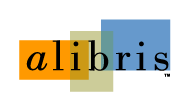Wrylies Redux
Good morning, Wavers! For today's reading pleasure, here is a previous RW blog post from a couple of years back about the use of wrylies. Sometimes I use an older post because it's hot, I'm tired and I gotta be somewhere and other times it's because the topic bears repeating. Today's post falls under both categories. So enjoy.
***
Wrylies are what I actually prefer to call parentheticals – what writers use to indicate tone, attitude and sometimes an action that implies a tone or an attitude.
John (sarcastically) Your blog is great.
I have seen some strange things in wrylies. I have seen entire, long action lines in wrylies like:
Gertrude: (She sips his coffee, stares at him then thinks about last night. She smiles) Really? Your blog’s not bad either.
You think I’m kidding. I do not make these stories up. Welcome to the tragicomic world of the reader. That last parenthetical is of course is an example of a gross misinterpretation of what might be acceptable in a wrylie. Generally speaking, writers should use them sparingly and keep their contents, on the whole, to things like:
(coyly)
(softly)
(distracted)
(under her breath)
(to himself)
(chewing)
(tiredly)
(bewildered)
(cringing)
(blushing)
Ask yourself, before using a parenthetical, if it is really necessary. In other words, can the emotion or action you wish to describe be conveyed in the action line or in the dialogue itself? Whenever that is possible, please, please don’t use a wrylie.
Don’t get me wrong, there’s no law against wrylies; they won’t get your script tossed into the circular immediately, but the more you use them, the more I think your writing skills are not terrific. Be judicious, limit the usage as much as possible and remember these simple wrylie rules:
1) Never put in a wrylie what can be indicated in an action line. No (walking faster) or (remembering last night) or (wondering if the coffee is too strong) or (looking her up and down).
2) Don’t indicate emotion in the wrylie unless there is no other possible choice. Maybe your character is hurtling toward earth after his parachute has broken.
Douglas: (sarcastically) Oh, this was a good idea.
Since he is hurtling, it would be tough to show him rolling his eyes or shifting his weight as he’s being a wiseacre.
3) Don’t use wrylies more than occasionally. A plethora will only lead to this:
Reader: (annoyed) Please kill me now.
4) Don’t use wrylies as an aside to the reader. Again, you think I’m kidding, but this example is a real one: (what you see next will amaze you). Now if you're Shane Black, that could be really cool. But you're probably not Shane Black.
Reader: (icy disdain) This is such a PASS writer.
Action lines are just that – indicating action, movement, description, location. Yes? Yes. Wrylies are very small asides (laughing) (wheezing) (amazed). Used with restraint, they add a very light touch to a moment. It is better to use (to himself) than taking up the space in an action line to say:
John mumbles to himself -
John: Parachuting was your idea, idiot!
versus
John: (to himself) Parachuting was your idea, idiot!
Wrylies are about flow – they are shorthand way to give us, in a word or maybe two, a snapshot of the situation. Nothing more, nothing less. Wrylies should not impose; they should have quiet impact. Consider the wrylie the shy cousin who lives in the attic...emerging rarely but to great effect.
If you enjoyed this post, follow me on Twitter or subscribe via RSS.
























4 comments:
Thanks so much for that post! I was always in 2 minds about wrylies. I used to put them to show sarcasm but think to myself "obviously it's sarcasm!"
So thanks for the awesome tips - really helps a lot. Hope you don't mind if I link to this in my own blog?
Funny, I was just thinking about this ... I generally don't use them, but I reread WHICH LIE DID I TELL by William Goldman who, well, uses wrylies quite a bit in his samples.
Generally this gets passed off as, "Well, Bill does it because he has two Oscars and he can get away with it, etc" but this neglects to address the fact that Bill wrote two books specifically to tell other screenwriters how to write screenplays well ... and that in WLDIT he asks other pro writers to evaluate his half script sample ... no one mentions them, that I can recall.
I don't mention this as a defense of wrylies, I just think it's one of those things, like "we see" which bothers readers maybe more than it should ...
And I think a wryly could have it's use, as Bill uses them ... even though I rarely use them myself (I usually just put "after a moment" which represents a beat).
Anyway, not trying to start a fight, just had that thought while reread Goldman's book.
Hello,
Quick question...
If you want to add in a pause, are wrylies the place to put them...
(pause)
Or... would you just put an ellipsis?
Thanks!
@Dickie - your usage is fine. xo
Post a Comment